Papers by Marisa Di Pietro
International Journal of Cardiology, May 1, 2004
Pharmacology & therapeutics, Feb 1, 2024
International Journal of Infectious Diseases, Dec 1, 2022
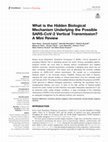
Frontiers in Physiology, May 5, 2022
Severe Acute Respiratory Syndrome Coronavirus 2 (SARS-CoV-2) represents an emerging infection tha... more Severe Acute Respiratory Syndrome Coronavirus 2 (SARS-CoV-2) represents an emerging infection that is spreading around the world. Among susceptible patients, pregnant women are more likely to develop serious complications and negative obstetric outcomes. Vertical transmission constitutes a debating issue which has not been completely understood. This review aims at describing the currently available evidence on SARS-CoV2 vertical transmission. We carried out a computerized literature search in the Cochrane Library, PubMed, Scopus and Web of Science, selecting the most relevant studies on vertical transmission from the outbreak onset until February 2022. The analysis of the available literature identifies the presence of SARS-CoV2 genome in different biological specimens, confirming the hypothesis that a transplacental infection can occur. In spite of the high number of infected people around the world, mother-to-child infections have been infrequently reported but it can be observed under certain biologic conditions. A deep knowledge of the underlying mechanisms of SARS-CoV2 vertical transmission is of paramount importance for planning an adequate management for the affected mothers and newborns.
Endocrine Abstracts, May 2, 2023
Microorganisms, May 16, 2019
Research in Chlamydia trachomatis and Chlamydia pneumoniae has gained new traction due to recent ... more Research in Chlamydia trachomatis and Chlamydia pneumoniae has gained new traction due to recent advances in molecular biology, namely the widespread use of the metagenomic analysis and the development of a stable genomic transformation system, resulting in a better understanding of Chlamydia pathogenesis. C. trachomatis, the leading cause of bacterial sexually transmitted diseases, is responsible of cervicitis and urethritis, and C. pneumoniae, a widespread respiratory pathogen, has long been associated with several chronic inflammatory diseases with great impact on public health. The present review summarizes the current evidence regarding the complex interplay between C. trachomatis and host defense factors in the genital micro-environment as well as the key findings in chronic inflammatory diseases associated to C. pneumoniae.
International Journal of Molecular Sciences, Dec 13, 2022
This article is an open access article distributed under the terms and conditions of the Creative... more This article is an open access article distributed under the terms and conditions of the Creative Commons Attribution (CC BY
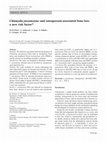
Osteoporosis International, Nov 16, 2012
We found an association between the presence of Chlamydia pneumoniae DNA both in osteoporotic bon... more We found an association between the presence of Chlamydia pneumoniae DNA both in osteoporotic bone tissue and peripheral blood mononuclear cells (PBMCs) and the increase in circulating resorptive cytokines. Introduction Our study was designed to determine whether C. pneumoniae infection may be involved in osteoporosisassociated bone loss. Methods The study included 59 women undergoing hip joint replacement surgery for femoral neck fracture: 32 with osteoporosis and 27 with osteoarthritis. A total of 118 tissue specimens (59 bone tissues, 59 PBMCs) were examined for C. pneumoniae DNA by real-time polymerase chain reaction (PCR). Serum levels of soluble receptor activator of nuclear factor kappa B ligand (sRANKL), osteoprotegerin (OPG), interleukin (IL)-1β, tumor necrosis factor-α, and IL-6 were also measured. Results C. pneumoniae DNA was detected in osteoporotic bone tissue whereas it was not found in non-osteoporotic bone tissue (p <0.05). A significantly higher rate of C. pneumoniae DNA (p<0.05) was found in PBMCs of osteoporotic patients than in those of osteoarthritis patients. Among osteoporotic patients, serum sRANKL, IL-1, and IL-6 concentrations as well as sRANKL/OPG ratio significantly differ between patients with bone tissue and PBMCs positive to C. pneumoniae and C. pneumoniae-negative patients. Conclusion The association between the presence of C. pneumoniae DNA, both in bone tissue and PBMCs, and the increase in sRANKL/OPG ratio as well as in IL-1β and IL-6 levels observed in osteoporotic patients suggests C. pneumoniae infection as a new risk factor for osteoporosis.
International Journal of Molecular Sciences, Aug 23, 2022
This article is an open access article distributed under the terms and conditions of the Creative... more This article is an open access article distributed under the terms and conditions of the Creative Commons Attribution (CC BY
International Journal of Environmental Research and Public Health, Feb 1, 2023
This article is an open access article distributed under the terms and conditions of the Creative... more This article is an open access article distributed under the terms and conditions of the Creative Commons Attribution (CC BY
European Journal of Inflammation, Sep 1, 2011
We report the first case of Nocardia altamirensis cutaneous infection in an immunocompetent host.... more We report the first case of Nocardia altamirensis cutaneous infection in an immunocompetent host. A 53-year-old male, with no predisposing factors, presented with a suppurative papular nodule on the dorsum of his left foot. N. altamirensis was identified by sequencing the 168 ribosomal RNA (rRNA), and treatment with amikacin led to complete resolution ofthe clinical picture. We believe that cutaneous nocardiosis should be kept in mind as a possible cause of serious complications also in immunocompetent hosts considering a nonspecific clinical picture and misdiagnosis of the infection as well as the poor response to empirical antimicrobial therapy.

PubMed, Jul 16, 2020
Chlamydia trachomatis, the leading cause of bacterial sexually transmitted diseases worldwide, ca... more Chlamydia trachomatis, the leading cause of bacterial sexually transmitted diseases worldwide, can disseminate and localize to the upper genital tract impairing reproductive function. Specifically, ascending C. trachomatis genital infection has been demonstrated to cause epididymitis or epididymo-orchitis, well-known risk factors for male infertility. C. trachomatis possesses the ability to infect primary human Sertoli cells, key elements for the spermatogenetic process and the immune protection of germ cells. Therefore, herein, we investigated the innate immune response in Sertoli cells following C. trachomatis infection, as well as its indirect effects on human spermatozoa. Specifically, we evaluated C. trachomatis mediated induction of Toll-like Receptors (TLR) 2, 3 and 4 as well as of downstream intracellular signaling molecules (NFκB and IRF3) and the levels of the related inflammatory mediators (IL-1α, IL-6, IFN-α, IFN-β and IFN-γ), in an in vitro infection model of primary human Sertoli cells. The main result of our study shows that C. trachomatis induced TLR3-mediated recognition in human Sertoli cells, accompanied by the down-modulation of NFκB and IRF3-dependent signaling pathways followed by no production of pro-inflammatory cytokines. In conclusion, our findings suggest that C. trachomatis can disrupt the innate immune response in Sertoli cells and evade intracellular killing, potentially giving rise to a long-term infection that may exert negative effects on the male reproductive system.
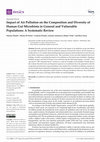
Toxics
Recently, growing attention has focused on the impact of air pollution on gut microbiota as a pos... more Recently, growing attention has focused on the impact of air pollution on gut microbiota as a possible mechanism by which air pollutant exposure increased the risk for chronic diseases, as evidenced by in vivo studies demonstrating important exposure-induced alterations in the diversity and relative abundance of gut bacterial taxa. This systematic review provides updated state-of-art findings of studies examining the impact of air pollution on the human gut microbiota. Databases PubMed, Scopus, and Web of Science were searched with the following strategy: “air poll*” AND “gut micro*” OR “intestinal micro*”; moreover, a total of 10 studies were included. Overall, there is the evidence that short-term and long-term exposure to air pollutants have the potential to alter the composition and diversity of gut microbiota; some studies also correlated air pollution exposure to adverse health effects (impaired fasting glucose, adverse pregnancy outcomes, and asthma attacks) via alterations i...
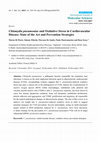
Abstract: Chlamydia pneumoniae, a pathogenic bacteria responsible for respiratory tract infection... more Abstract: Chlamydia pneumoniae, a pathogenic bacteria responsible for respiratory tract infections, is known as the most implicated infectious agent in atherosclerotic cardiovascular diseases (CVDs). Accumulating evidence suggests that C. pneumoniae-induced oxidative stress may play a critical role in the pathogenesis of CVDs. Indeed, the overproduction of reactive oxygen species (ROS) within macrophages, endothelial cells, platelets and vascular smooth muscle cells (VSMCs) after C. pneumoniae exposure, has been shown to cause low density lipoprotein oxidation, foam cell formation, endothelial dysfunction, platelet adhesion and aggregation, and VSMC proliferation and migration, all responsible for the typical pathological changes of atherosclerotic plaque. The aim of this review is to improve our insight into C. pneumoniae-induced oxidative stress in order to suggest potential strategies for CVD prevention. Several antioxidants, acting on multi-enzymatic targets related to ROS produ...
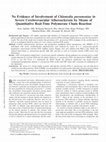
Stroke, 2004
Background and Purpose— All studies reporting high numbers of Chlamydia pneumoniae DNA positives ... more Background and Purpose— All studies reporting high numbers of Chlamydia pneumoniae DNA positives in stroke patients published to date have used polymerase chain reaction (PCR) techniques highly prone to generate false-positive results. The aim of this study was to analyze the prevalence of C. pneumoniae DNA in plaques of the carotid artery as well as in peripheral blood by means of a new, closed, real-time PCR system. Methods— Carotid endarterectomy specimens and preoperative peripheral blood mononuclear cells (PBMC) of 75 individuals with severe cerebrovascular atherosclerosis were analyzed by means of a C. pneumoniae -specific quantitative omp A-based real-time PCR TaqMan system. Plaques were also cultured onto HEp-2 cells. Before the surgical intervention, C. pneumoniae -specific IgM, IgG, and IgA as well as C-reactive protein (CRP) levels were determined. Results— 89% of all patients studied had C. pneumoniae- specific antibodies, but the pathogen was not detected in a single ca...
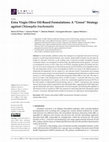
International Journal of Molecular Sciences
In recent decades, antibiotic misuse has emerged as an important risk factor for the appearance o... more In recent decades, antibiotic misuse has emerged as an important risk factor for the appearance of multi-drug-resistant bacteria, and, recently, antimicrobial resistance has also been described in Chlamydia trachomatis as the leading cause of bacterial sexually transmitted diseases worldwide. Herein, we investigated, for the first time, the antibacterial activity against C. trachomatis of a polyphenolic extract of extra virgin olive oil (EVOO), alongside purified oleocanthal and oleacein, two of its main components, in natural deep eutectic solvent (NaDES), a biocompatible solvent. The anti-chlamydial activity of olive-oil polyphenols (OOPs) was tested in the different phases of chlamydial developmental cycle by using an in vitro infection model. Transmission and scanning electron microscopy analysis were performed for investigating potential alterations of adhesion and invasion, as well as morphology, of chlamydial elementary bodies (EBs) to host cells. The main result of our study...
International Journal of Molecular Sciences, Apr 1, 2022
This article is an open access article distributed under the terms and conditions of the Creative... more This article is an open access article distributed under the terms and conditions of the Creative Commons Attribution (CC BY
Negli ultimi anni Chlamydia pneumoniae è stata implicata nella patogenesi dell'aterosclerosi ... more Negli ultimi anni Chlamydia pneumoniae è stata implicata nella patogenesi dell'aterosclerosi ed il suo coinvolgimento sembra essere correlato alla capacità del microrganismo di dar luogo a forme persistenti, quindi, ad infezioni croniche. Lo scopo della nostra ricerca è stato quello di studiare i meccanismi molecolari coinvolti nello sviluppo della forma persistente di C. pneumoniae, mediante l'immunofluorescenza diretta, per la valutazione delle progenie infettanti e la real-time PCR per la determinazione della quantità di DNA di Clamidia. E' stato, quindi, analizzato il profilo di espressione di differenti geni implicati nella differenzazione fra forma persistente e forma replicativa di C. pneumoniae





Uploads
Papers by Marisa Di Pietro